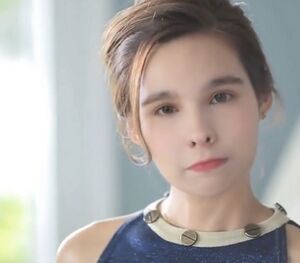Monarchy of Rhava: Difference between revisions
No edit summary |
No edit summary |
||
| Line 20: | Line 20: | ||
The '''monarchy of Rhava''' (whose monarch is referred to as the '''king of Rhava'''; [[Rhavanese language|Rha]]: Srisulāk Mná Náphōng Rhâvánām) refers to the [[constitutional monarchy]] and monarch of the [[Rhava|Kingdom of Rhava]]. The King of Rhava is the [[head of state]] and head of the ruling Royal [[Phiewthiong dynasty|House of Phiewthiong]] (Krâyā-Phiêwthióng). | The '''monarchy of Rhava''' (whose monarch is referred to as the '''king of Rhava'''; [[Rhavanese language|Rha]]: Srisulāk Mná Náphōng Rhâvánām) refers to the [[constitutional monarchy]] and monarch of the [[Rhava|Kingdom of Rhava]]. The King of Rhava is the [[head of state]] and head of the ruling Royal [[Phiewthiong dynasty|House of Phiewthiong]] (Krâyā-Phiêwthióng). | ||
Although the current [[Phiewthiong Dynasty]] was created in 1952, the existence of the institution of monarchy in Rhava is traditionally considered to have its roots from the founding of the [[Sukhmeng|Sukhmeng Kingdom]] in 4654. The monarchy's official ceremonial residence is the [[Prasat Saphrayang]] in Saruongsaphrayang (ruins of Sukhmeng), while the private residence has been at the [[Thay Bassile]], built by the Salvians in the 1600s and is the | Although the current [[Phiewthiong Dynasty]] was created in 1952, the existence of the institution of monarchy in Rhava is traditionally considered to have its roots from the founding of the [[Sukhmeng|Sukhmeng Kingdom]] in 4654. The monarchy's official ceremonial residence is the [[Prasat Saphrayang]] in Saruongsaphrayang (ruins of Sukhmeng), while the private residence has been at the [[Thay Bassile]], built by the Salvians in the 1600s and is the Rhavanese Salvian version of ''dies basilica'', or ''day palace''. | ||
The king of Rhava's titles include [[head of State]], [[Head of the Royal | The king of Rhava's titles include [[head of State]], [[Head of the Royal Rhavanese Armed Forces|head]] of the [[Royal Rhavanese Armed Forces]], adherent of [[Bikamma in Rhava|Bikamma]] and upholder of [[Religion in Rhava|religions]], as well as the ''jewel of phadinani'', and ''the spear the pierces heaven''. | ||
==History== | ==History== | ||
Revision as of 19:17, 4 December 2022
| King of the Kingdom of Rhava | |
|---|---|
| Srisulāk Mná Náphōng Rhâvánām | |
| Incumbent | |
 | |
| Katewakham (Yambin III) since 25 April 2008 | |
| Details | |
| Style | His Majesty |
| Heir presumptive | Saphong Njaome |
| First monarch | Sri Kaphietinhorng of Sukhmeng |
| Formation | 4654 |
| Residence | Prasat Saphrayang (golden temple) Thay Bassile (residential) |
| Appointer | Hereditary |
| Website | royaloffice |
The monarchy of Rhava (whose monarch is referred to as the king of Rhava; Rha: Srisulāk Mná Náphōng Rhâvánām) refers to the constitutional monarchy and monarch of the Kingdom of Rhava. The King of Rhava is the head of state and head of the ruling Royal House of Phiewthiong (Krâyā-Phiêwthióng).
Although the current Phiewthiong Dynasty was created in 1952, the existence of the institution of monarchy in Rhava is traditionally considered to have its roots from the founding of the Sukhmeng Kingdom in 4654. The monarchy's official ceremonial residence is the Prasat Saphrayang in Saruongsaphrayang (ruins of Sukhmeng), while the private residence has been at the Thay Bassile, built by the Salvians in the 1600s and is the Rhavanese Salvian version of dies basilica, or day palace.
The king of Rhava's titles include head of State, head of the Royal Rhavanese Armed Forces, adherent of Bikamma and upholder of religions, as well as the jewel of phadinani, and the spear the pierces heaven.
